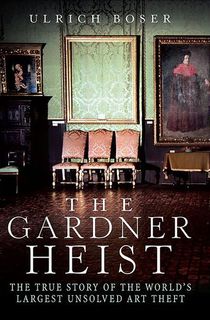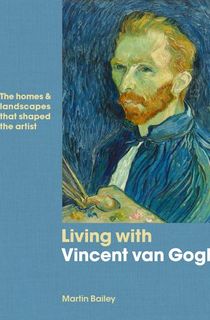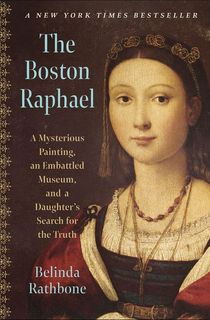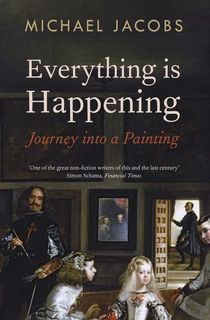Across the globe, art galleries hold some of the most famous and celebrated works of art in existence. Artists like Claude Monet, Vincent van Gogh, Leonardo da Vinci, and Andy Warhol revolutionized the art world, and their masterpieces are some of the most sought-after pieces in existence.
But with the fame, prestige, and artistry of these famous paintings comes a darker, lesser-known side, from art thieves attempting to rob galleries to forgers working to make a quick buck by copying priceless artwork. The books on this list take us behind the scenes to examine scandals in the art world, the history behind famous pieces of art, and the secret lives of the artists who created these masterpieces.

Banksy
Banksy went from being an unknown street artist from Bristol, England to one of the best known living artists. His pieces have been sold for millions of dollars at prestigious auction houses and he was even nominated for an Oscar. But, remarkably, Banksy has managed to keep his identity concealed, covering his face, distorting his voice, and withholding his real name.
Reporter Will Ellsworth-Jones delves into the world of Banksy, through an investigation of the artist and conversations with both his friends and his enemies. This biography seeks to unwind the contradictions of an artist who has gained great renown but remained anonymous, who has accumulated wealth and fame after starting as a leader in an art form that is often dismissed.

The Gardner Heist
On March 18, 1990, two men disguised as police officers broke into the Isabella Stewart Gardner Museum in Boston. What followed was the largest art heist in history: the men took a dozen masterpieces including one Vermeer, three Rembrandts, and five Degas.
But even after an intensive investigation of thousands of leads, many interviews conducted, and a huge reward offered, the identities of the thieves and the location of every single one of the art pieces remains unknown. Ulrich Boser goes deep into the Boston underworld, encountering an intriguing cast of characters, on his quest to resolve the greatest cold case in the world of fine art.

Living with Vincent van Gogh
Throughout his life, both in the restless years of his twenties through to the peak of his art career at the end of his life, Vincent van Gogh was a traveler. In this book, Martin Bailey, takes readers to the many cities and sites that van Gogh visited and lived in. Bailey explains how the cityscapes of each locale uniquely influenced van Gogh’s style and work. This book reveals the places that inspired one of the greatest artists to ever live. Bailey incorporates artworks, unpublished archival documents, and contemporary landscape photography to give an immersive view into the life of the artist.

The Private Lives of the Impressionists
In this New York Times-bestselling book, Sue Roe provides an inside look into the lives of some of the painters who changed the art world with the development of impressionism. During the 20 years that this group of artists lived and worked together, their paintings were most often not respected or even noticed. Today, however, impressionist paintings are some of the most popular and recognizable works of art.
Most people are at least somewhat familiar with the works of Monet and other impressionists, but little is widely known about the artists themselves. Roe takes readers down the streets of a Paris undergoing great changes in the late nineteenth century to reveal the personal lives of these renowned painters.

The Boston Raphael
The night before the Boston Museum of Fine Arts was to celebrate its centennial, it announced that it had acquired an unknown and uncatalogued painting by Raphael. As headlines around the world spread the news of this discovery, an Italian art sleuth decided to investigate the details of the painting’s export from Italy—ultimately challenging the museum’s right to ownership.
Related: The 18 Greatest War and Battle Paintings of All Time
The ensuing scandal, including the resignation of the museum’s director, Perry T. Rathbone, played out in front of the public. However, only in The Boston Raphael is the full story finally revealed.

Andy Warhol
Arthur C. Danto provides a raw look into the world of pop artist Andy Warhol and the impact his work has had on American society. From the early reception of Warhol's work to his relationships with other artists, Danto looks at the complexity of his personality, his art, and his philosophy.
Related: 10 Illuminating Andy Warhol Books
Danto also gives informed and detailed interpretations of Warhol’s most famous works. He looks to the social context and philosophical foundation of each piece while comparing them to Warhol’s predecessors and successors. Warhol’s multidimensional life as an artist, activist, writer, filmmaker, and philosopher are explored and celebrated.

Everything is Happening
Esteemed art historian and travel author Michael Jacobs was haunted by Diego Velázquez's masterpiece Las Meninas ever since he saw it in the Prado as a young teenager. He spent years searching for the ultimate significance of the painting and developing his own relationship to the piece.
Related: 8 Essential Books About the Spanish Civil War
In this groundbreaking memoir, Jacobs recounts his first trip to Spain, his encounter with the man responsible for saving Las Meninas during the Spanish Civil war, and more. He succeeds in connecting the past with the present in this personal manifesto. The Financial Times describes Everything is Happening as a fascinating journey by "one of the great non-fiction writers of this and the last century."

Art That Changed the World
This book delivers a visual journey of 2,500 paintings and sculptures created by over 700 artists, from Leonardo da Vinci to Vincent Van Gogh. Exploring different eras of art and how its cultural influences spread across the globe, Art That Changed the World explains the details behind each transformative piece. From China's Ming dynasty to pre-colonial Australia, readers will explore the wide world of art, all while analyzing the significance and history behind famous and lesser-known works of art alike.

I Was Vermeer
Han van Meegeren was considered a paranoid, drug-addicted, second-rate painter. However, his forgeries of Johannes Vermeer masterpieces easily made him a secret star of the art world. During van Meegeren’s career as a forger, he made 50 million dollars, gained the attention of the world’s press, and had the satisfaction of exploiting the Nazis.
Related: 21 Essential World War II Books That Examine Every Angle of the Conflict
However, with the end of the war, van Meegeren was arrested as a Nazi collaborator. The only way to prove his innocence was to confess to his true crime. I Was Vermeer is the true story of van Meegeren's unpredictable life and career.

ArtCurious
Jennifer Dasal, host of the ArtCurious podcast, explores some of the strangest, funniest, and most fascinating stories behind the world’s most famous artists and their works. Dasal reveals that Van Gogh’s suicide may have actually been an accidental killing, or possibly even murder, and she gives a behind-the-scenes look into the private life of Andy Warhol.
ArtCurious dives into the hidden truths behind some of the world’s most recognized work. After all, there are two sides to every story.

What Are You Looking At?
When it comes to art, different movements and styles are always subject to criticism and questions. With modern art, people have often asked, “What am I looking at?” and “Is this really art?”
Related: Explore the Dazzling History of Film With 9 Illuminating Books
Will Gompertz, the former art director of London's Tate Gallery and BBC arts editor, has made it his mission to delve into the world of modern art and teach others how to not only understand it but also celebrate it. Through stories and anecdotes, he explains the history and foundation of modern art, what makes it art, and why a five-year-old couldn’t do it after all.

The Art of Rivalry
Pulitzer Prize-winning art critic Sebastian Smee investigates the competitive friendships between four sets of artists: Manet and Degas, Picasso and Matisse, Pollock and de Kooning, and Freud and Bacon.
Related: 10 Fascinating Cave Paintings That Illuminate the Prehistoric World
All eight are now household names, but it was the challenges and competition they faced within their relationships that helped push them to this state of recognition. From shared ideas to stolen paintings and mistresses, the truth of these rivalries is finally revealed.

Stealing the Show
John Barelli spent nearly 40 years working as the chief security officer at New York’s Metropolitan Museum of Art. Now retired, he was once in charge of one of the world’s largest collections of treasures. He also oversaw the museum’s staff, thousands of daily visitors, and even visits from presidents, royals, and heads of state from around the world.
Being in the dark corridors of the Met after hours is an experience few get to witness. Barelli takes us along with him through the highs and lows of protecting some of the world's most famous masterpieces. Stealing the Shows dives into the crimes that occurred on his watch. From attempted robberies, accidents, and recovered artwork to mysteries that remain unsolved, Barelli’s first-hand account goes into details the public has never heard before.

The Lost Painting
400 years ago, the artist Caravaggio roamed the streets of Rome getting into brawls, drinking away his money, and moving from home to home. He was also a master of Italian Baroque—a genius and a revolutionary whose greatest challenge was his own inner demons.
Related: The Mystery of the Vanishing Amber Room
Author Jonathan Harr takes readers on a journey in search of a lost Caravaggio masterpiece, The Taking of Christ. When a graduate student named Francesca Cappelletti finds a vital clue in an untouched archive, she sets out to piece together the puzzle of what happened to the Caravaggio painting, once and for all.







